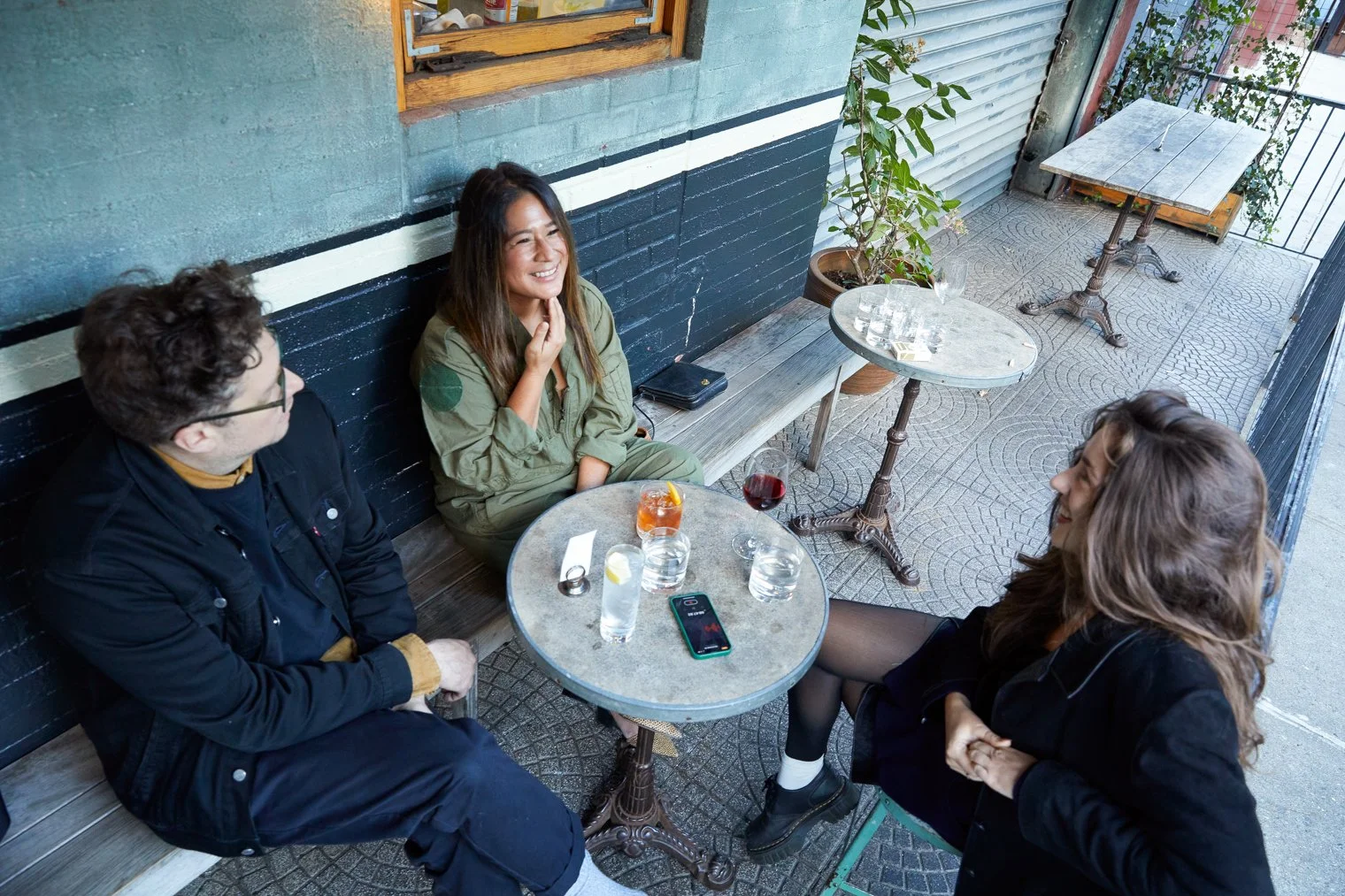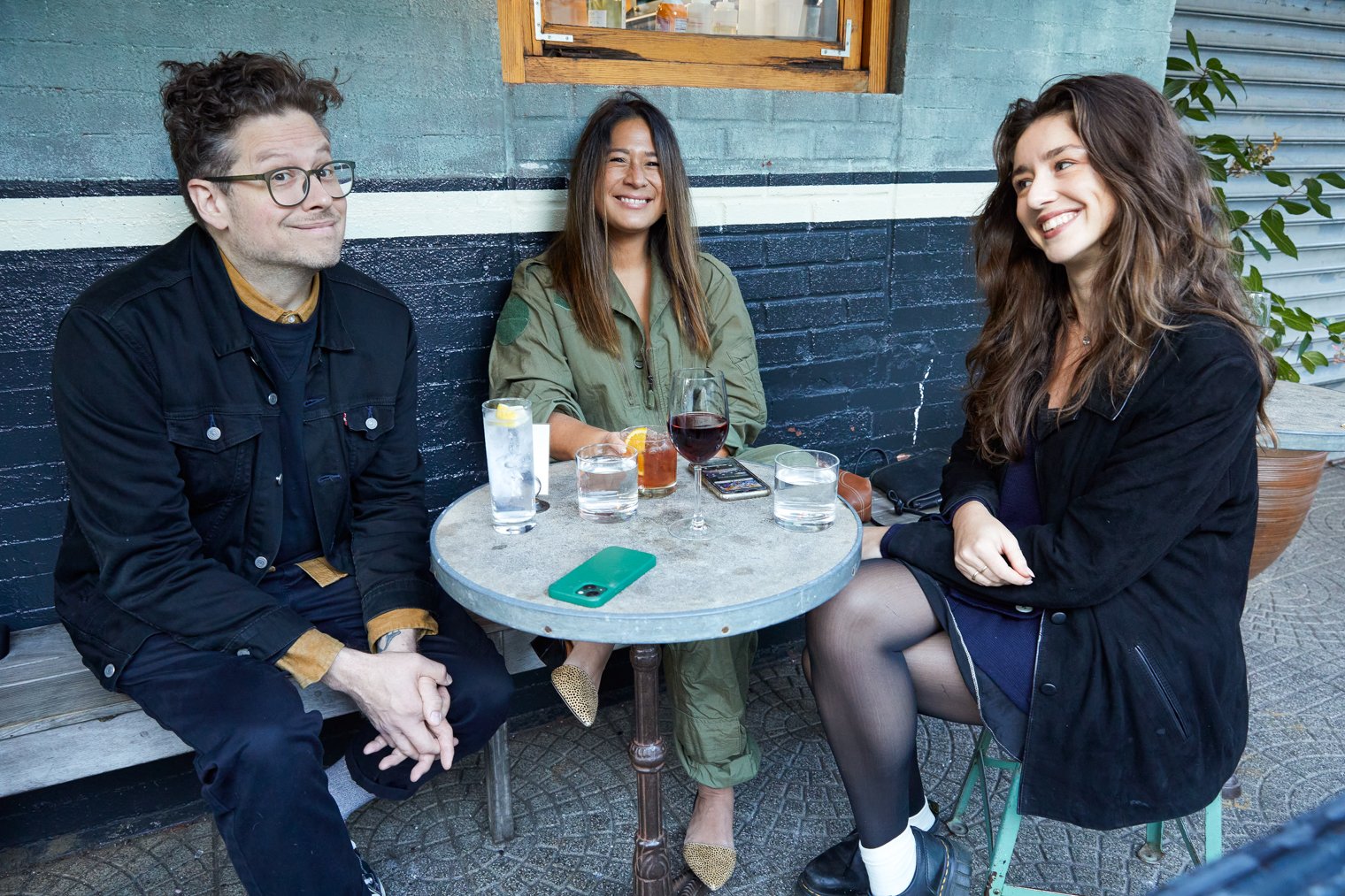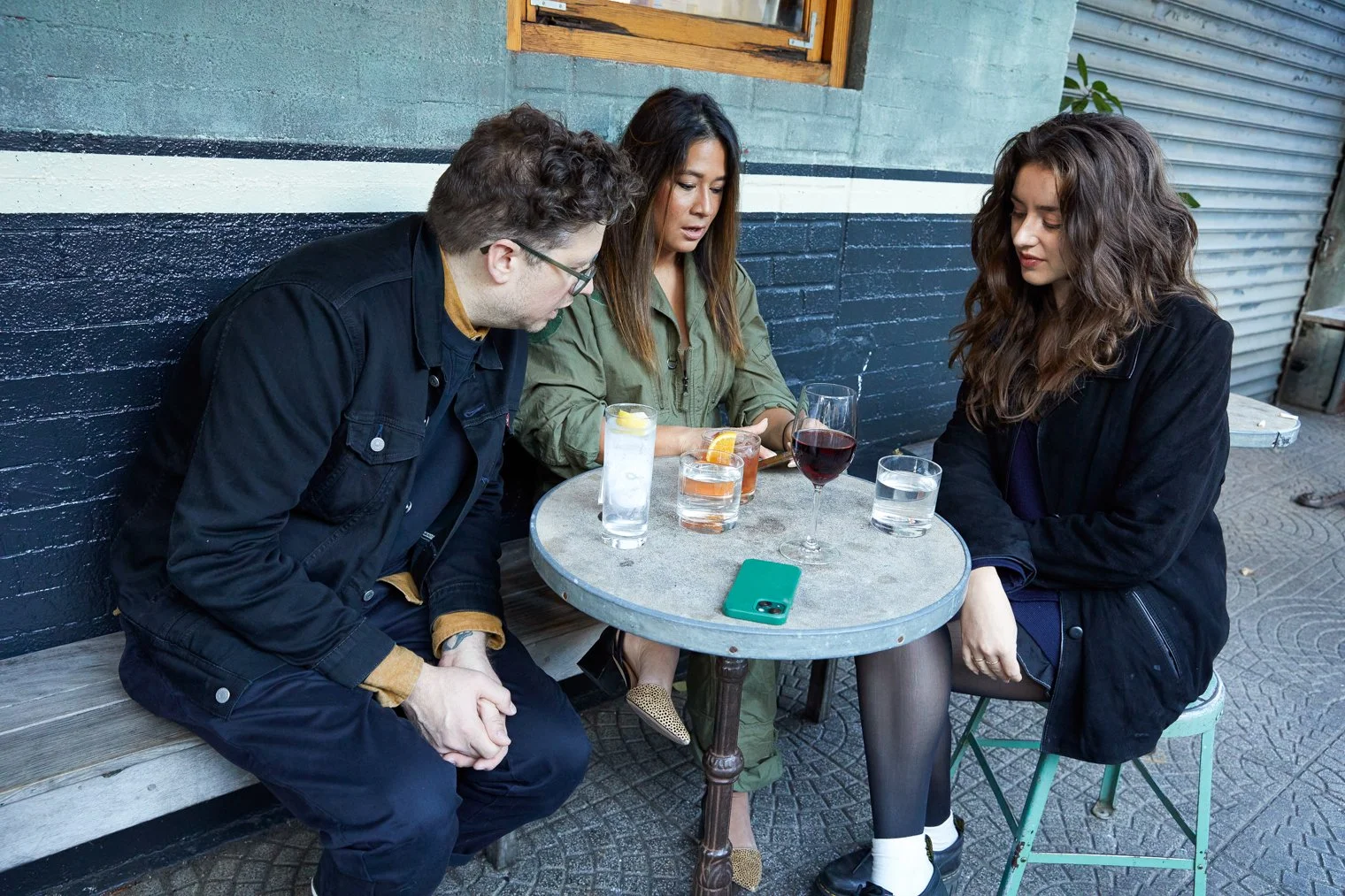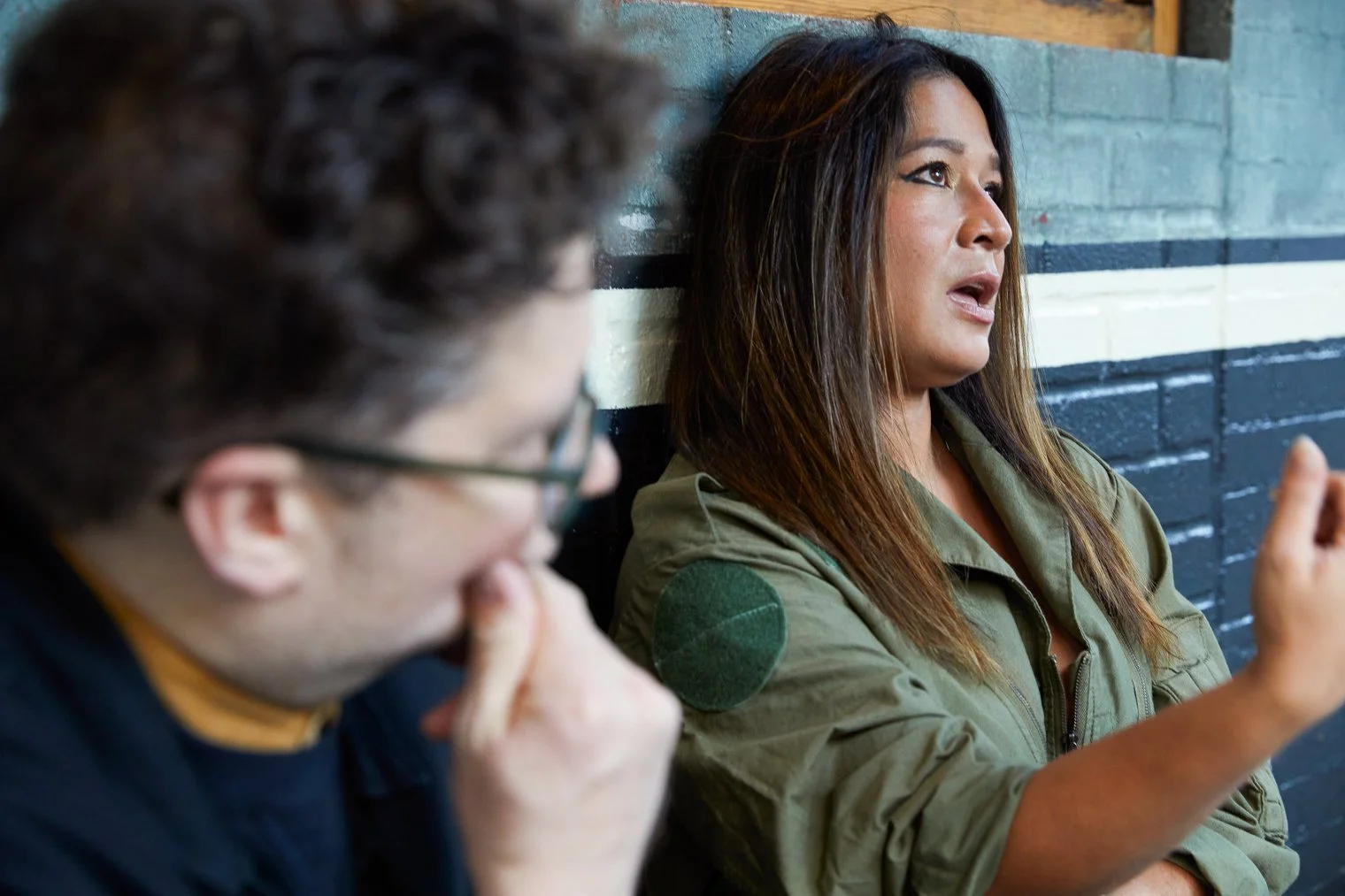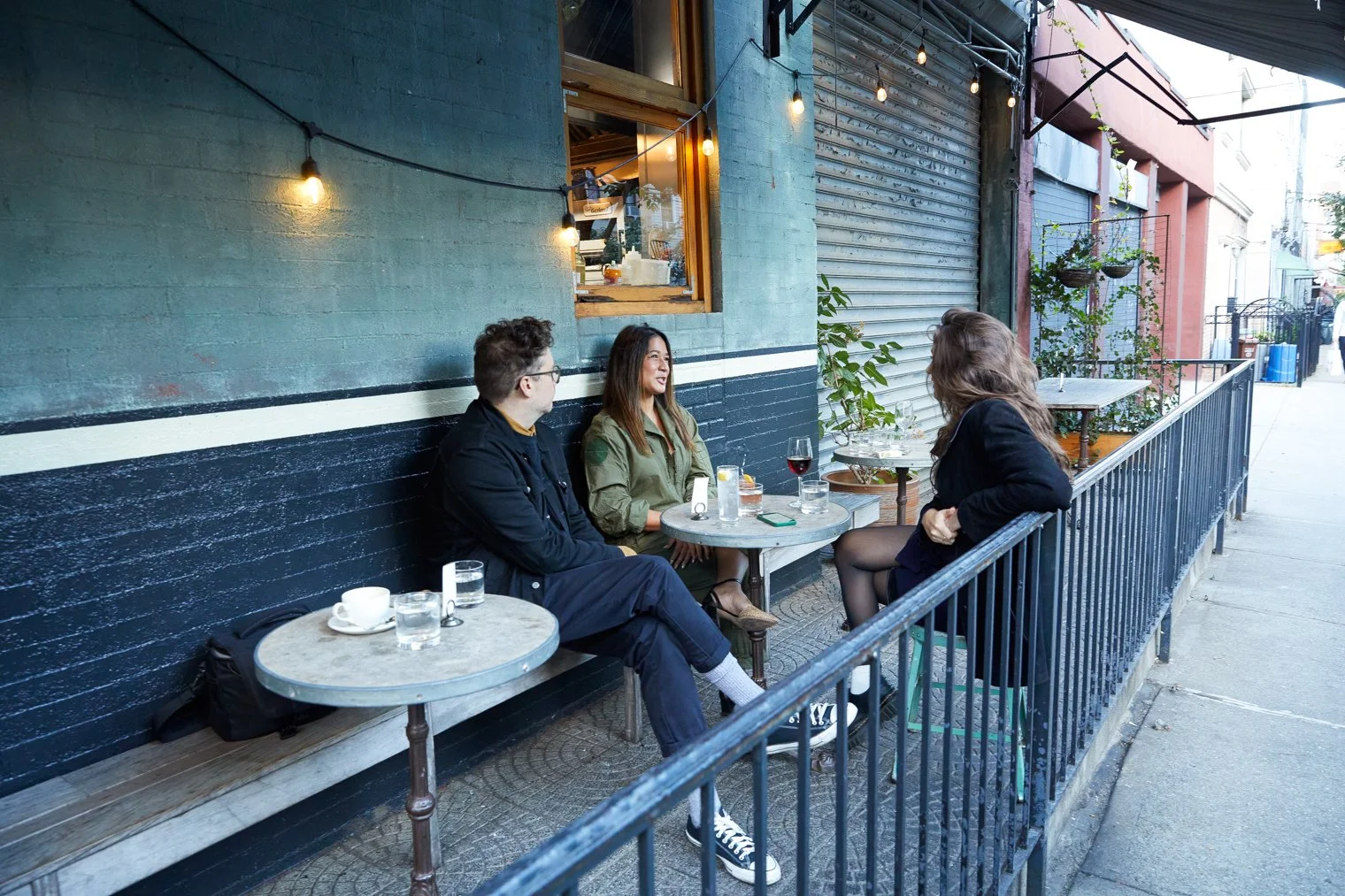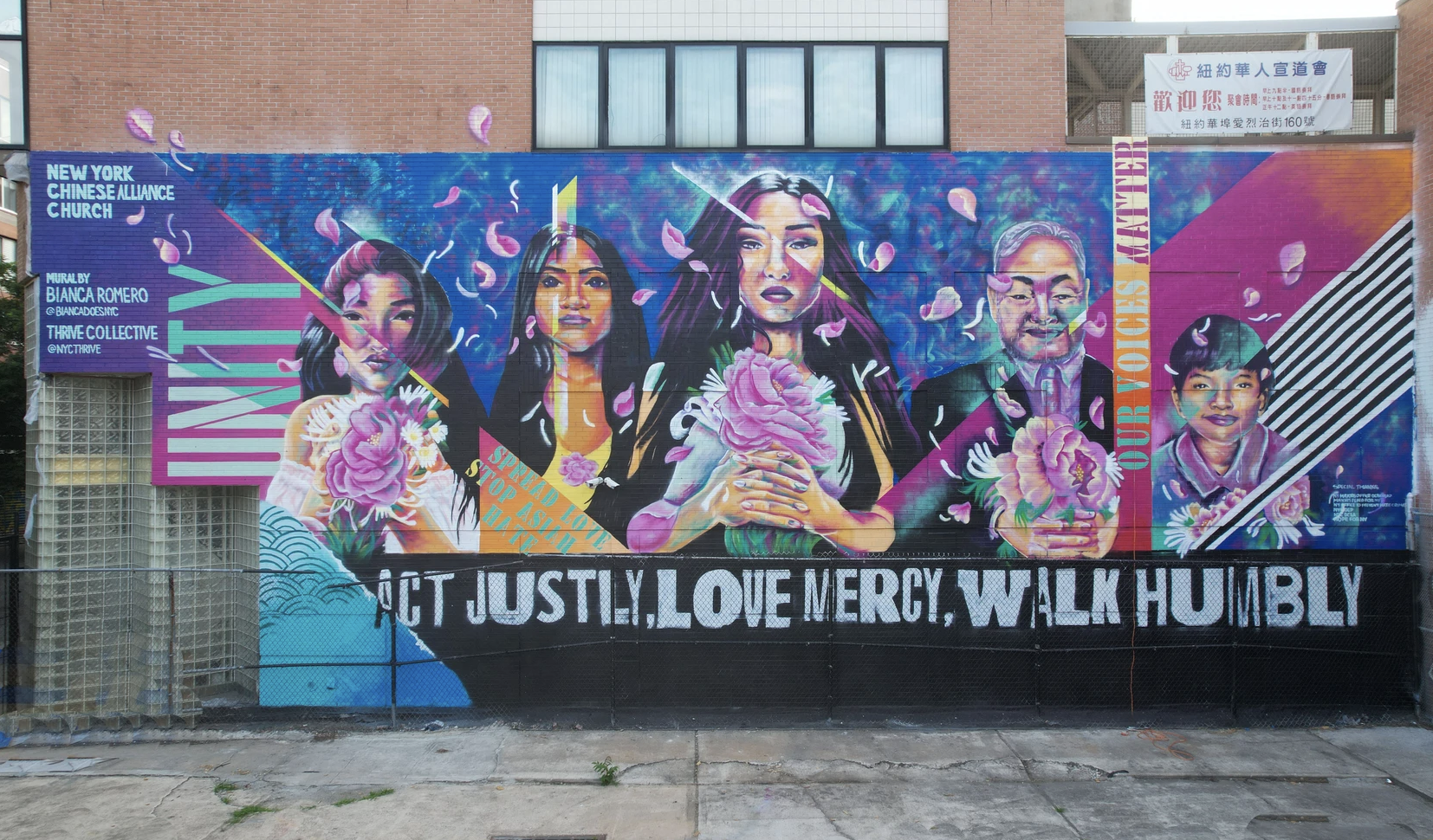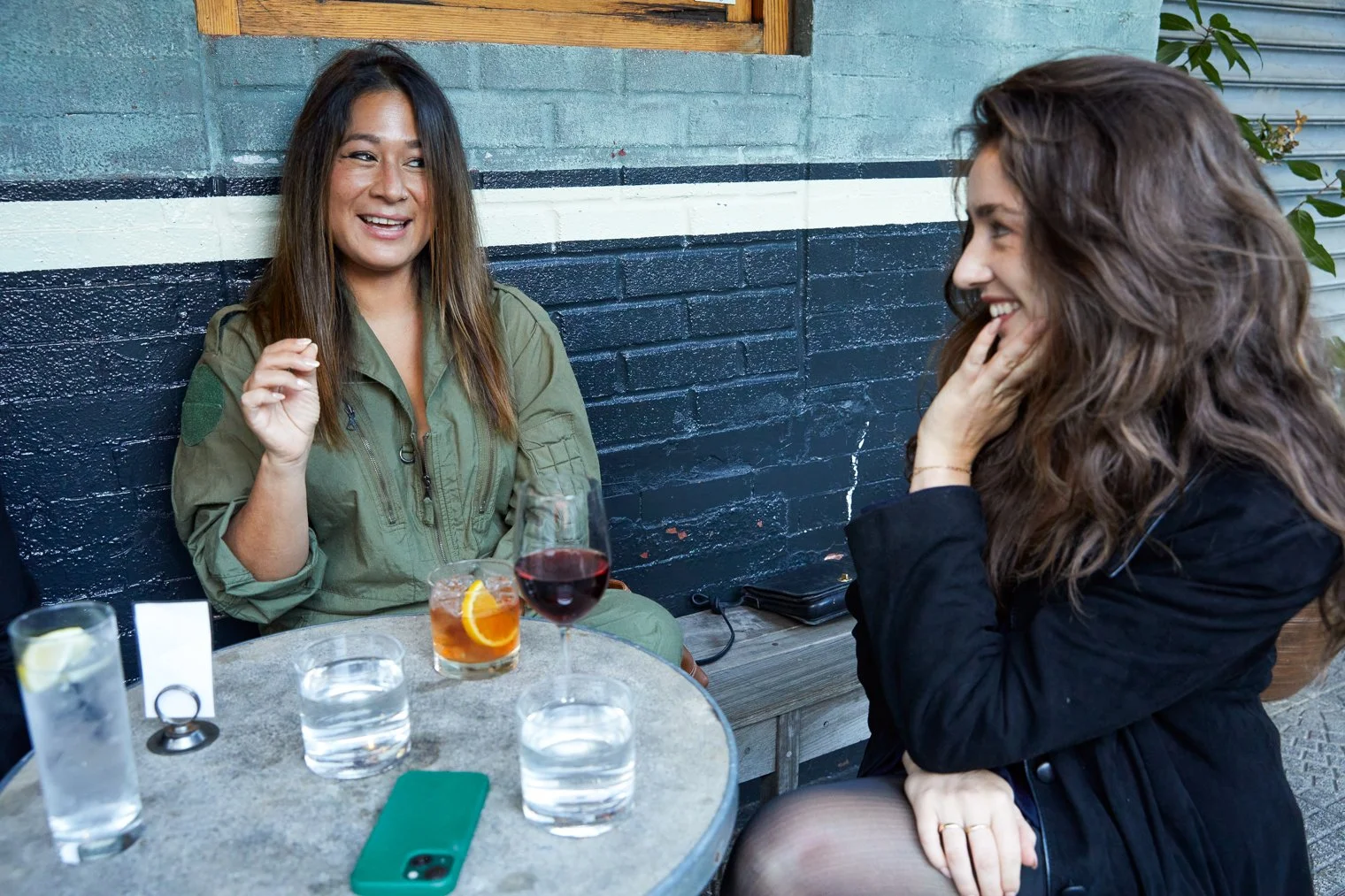Exploring New Dimensions with Bianca Romero
Bianca Romero strides toward our table at Cafe Colette with the confidence of a seasoned pop star taking the stage, and it’s impossible not to feel a little starstruck. In New York and beyond, her collage-style murals are as familiar as a Taylor Swift track. You might even recognize our collaboration with the artist back in 2020, when Maker’s Mark commissioned custom designs that Colossal then adapted to our largest domination campaign to date: twenty-two murals.
Since painting her designs all over New York City, we’ve remained in touch with Bianca as her career continues to soar. It was our pleasure to slow down with her on this autumn afternoon, and catch up together.
Pictured (left to right): John Samels, Bianca Romero, and Katie Danforth.
Katie Danforth: I’d love to hear a bit about the legendary Maker’s Mark campaign, since it was before my time here at Colossal. How did that project get started?
Bianca Romero: It was during the pandemic, near the end of 2020. Originally when they approached me, it was for three to five walls. When I did the design and the brand team approved it and loved it, they kept adding more to it! That was actually the first time that I created a design for someone else to paint on a wall. It was a bit of an out-of-body experience. When I paint them myself, I always end up tweaking something in the moment — it's also part of the process. I freehand all my murals. It was kind of nice not painting the Maker’s Mark murals, but it was bizarre. Of course, they looked exactly like the design in the end.
KD: When you do something large-scale on your own, do you have a team of friends or contractors that you hire? Or are you painting every brushstroke?
BR: For the most part, I do it all myself, but it depends on the project.
Artwork by Bianca Romero. Hand-paint production by Colossal Media on behalf of Maker's Mark. Visit our case study for more.
John Samels: Did you go to art school?
BR: No. Both my parents are designers and artists, so I grew up around it. My dad owned a design agency on 23rd Street for a really long time, since the 80s. After school, I would walk to his office and do my homework and practice Adobe. It's funny because I was always like, I love it so much but I could never do it as a career. So I tried doing marketing, doing other things. When I used to work at creative agencies, I would be hiring artists, and working with them on all the different things. I'm grateful I’ve seen both sides of that process. The agency perspective helps me pitch projects and put a proposal deck together, for example.
KD: What's the greatest lesson that you've learned in your agency career that you can now apply as an artist pitching yourself?
BR: That's a good question…. I understand how the budgets work. I understand that a lot goes into it before even approaching an artist. I understand deadlines can be very hard. A lot of times when I am in a conversation with an agency and I have enough insight to ask certain questions, make suggestions, give feedback…. All sorts of stuff.
KD: Speaking up like that is so key. Something I’ve noticed is: some artists will submit a draft on its own, and others will include a description of their creative thought process and visual answer to their brief. The latter artists are the ones that never get negative feedback. I think a lot of artists are so used to thinking visually that it's hard to take a step back and remember that you're sharing this with salespeople who likely aren’t thinking visually. If you guide someone through that process, it goes a long way.
BR: And that part's always hard! Even having agency experience, you have to navigate those conversations a little bit. You really have to spell out what you're thinking and why you're making something a certain way.
KD: Speaking of your vision and perspective — every time I look through your portfolio, I'm struck by the textures and the layers and the energy behind everything. What's that process like?
BR: It's like therapy for me; it’s cathartic. I've been collaging forever, even when I was doing it just as a hobby. I love trying to find things that visually work together, but weren't intended to, or combining different stories and articles. For my pieces with a specific subject, it's almost like a scavenger hunt. I just did a painting of Erykah Badu and I put some of her lyrics into it. It can be a really tedious process, but I like it.
KD: There's something so investigative about that approach — you’re basically researching your subject and finding visual clues. Is that just how you've always done it?
BR: It depends, not every painting is about something specific. But when I do, it's kind of subconscious for me at this point — I go through a period where I'm literally walking around ripping posters off the walls or going through magazines. I'll put together a pile and then think, These things kind of work together and these colors kind of work together.
JS: Do you keep a library for yourself of collected things that you may want to use? Or do you get the prompt first and then look around the city and find things to collect?
BR: I do literally have piles and boxes of different things. I sort them into certain things, by color or by concept. But then also, if there's a specific brief, I will go out and try to find things that are about that specific thing. I did a show last year, the overarching theme was abortion rights and women's liberation. So I walked around and I focused on ripping off posters on the streets that were women's beauty campaigns. This might sound very convoluted, but in my mind I was like, This is kind of breaking a beauty standard. I did a whole series based on ripping apart these posters and putting them back together into paintings.
KD: It seems so perfect for that kind of project where, inherent in the creation of your piece is an act of vandalism. I love that, it’s like a protest on its own.
BR: Totally. It's weird because, when I do murals or paintings or whatever, you can't tell immediately that I did it that way.
KD: What's the lifecycle of a piece like, from collection to assembly to like final composition? Where do you spend most of your time on a piece?
BR: The composition is usually the easiest stage. The longest part of the process is probably collecting stuff. And then also making the painting itself. I have to wheat paste all the layers and then wait for it to fully dry before I can paint, and then wait for that to fully dry before I collage again. If I'm working every day, eight hours, that alone can take a couple of days. There are times that I try to rush the process, but it doesn't always work out. I've learned my lesson.
JS: Let's say you don't have a deadline and you're just making a piece for you. What’s that process like?
BR: It's funny because that's changed over time. I used to be very productive at like 3am. Now I wake up at like 7am, I have my coffee and I start painting. I keep to a schedule now: I wake up at a certain time every day, try to get all my emails out at a certain time. My living room right now has two easels I switch between, and a bunch of paintings around. Obviously things like that fluctuate, but I try to just have some sort of structure.
JS: Do you like to work with music, podcasts, TV on in the background, or total silence?
BR: I need stuff in the background. Podcasts are the only thing that works for me – I can put it on, let it rock for like, an hour and a half. Right now, I listen to Andrew Huberman — he's a neuroscientist, so it's a lot about psychology. I listen to Jay Shetty a lot, he interviews a lot of interesting people. I have so many I rotate. Dax Shepard and Emily Ratajkowski’s podcasts too.
KD: How do you keep your work feeling fresh to you? Have you been experimenting with anything interesting lately?
BR: I love creating, so it hasn't been boring yet. Lately, I've been creating a series of pieces that's more dimensional — since my paintings are layered already, I have been exploring adding even more dimension and physically building depth. I think for artists, you always need to get out of your comfort zone in some way. It could be a flop and it could not work, but at least you're trying different things. There's always different things going on in the world, different topics to address, different concepts to play around with.
Artwork and mural production by Bianca Romero.
KD: How did you arrive at muraling as a fine artist? Were you always interested in that format?
BR: Funny enough, no. [Laughing] I mean, I've always been around it, I grew up in the city. I have a lot of friends that are graffiti-heads or paint murals. I just never thought that's something I could do, it never crossed my mind. Before I became a full-time artist, I used to work at experiential agencies. Brands were asking to work with artists, and I started being around it a lot more again. It was kind of like this full-circle thing. Little by little, I began assisting my friends and dabbling with it. Then I started loving it and doing it more until, over time, people started hiring me to do it.
KD: Muraling found you. I feel like that's a story we hear a lot internally.
BR: Before I ever did murals, it used to terrify me when I would see my friends up on boom lifts and stuff. I thought, I could never do that. But now I do it, it's amazing.
This interview has been edited for brevity and clarity. We’d like to thank our friend Bianca Romero (@biancadoesnyc) for joining us. Follow the artist for updates on her work and new podcast, streaming soon. Thank you to Cafe Colette for hosting this interview. To learn more about artist sourcing opportunities, email us at info@colossalmediagroup.com.

